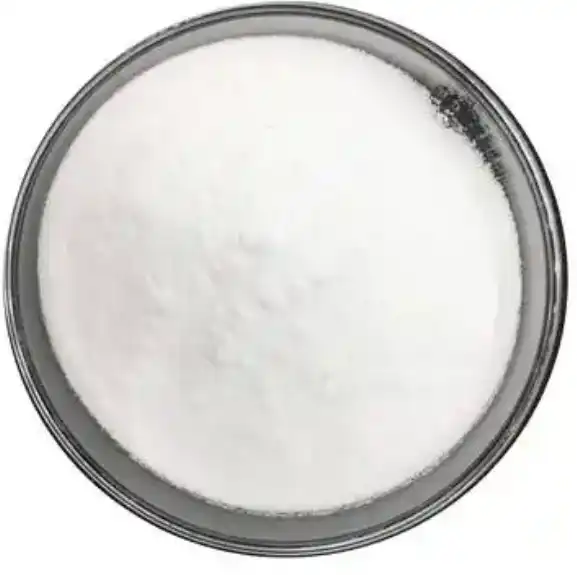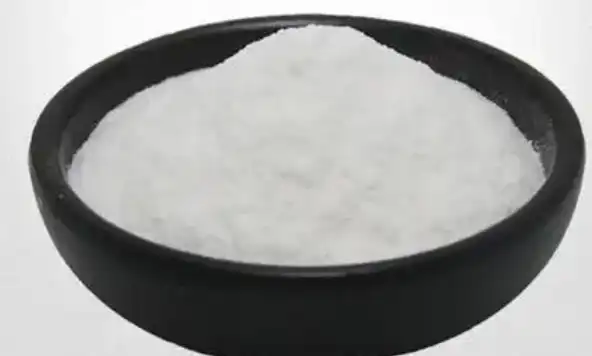Natural Ferulic Acid Powder: Key Sources & Extraction Methods
In the ever-evolving world of natural ingredients, Natural Ferulic Acid Powder has emerged as a powerhouse component in various industries. This plant-derived antioxidant has gained significant traction in cosmetics, health supplements, and even food products. But where does this remarkable substance come from, and how is it obtained? Let's delve into the key sources and extraction methods of this versatile compound.
What Are the Primary Natural Sources of Ferulic Acid Powder?
Ferulic acid is ubiquitous in nature, found in a myriad of plants. However, certain sources are particularly rich in this potent antioxidant, making them ideal for commercial extraction. Let's explore some of the primary natural sources:
Rice Bran
Rice bran, the outer layer of rice grains, is an exceptional source of ferulic acid. This by-product of rice milling, often discarded or used as animal feed, is now recognized for its nutritional value. The concentration of ferulic acid in rice bran can reach up to 500 mg per 100 grams, making it a lucrative source for extraction.
Corn Bran
Similar to rice bran, corn bran is also rich in ferulic acid. This outer layer of corn kernels contains significant amounts of the compound, typically ranging from 260 to 310 mg per 100 grams. The abundance of corn production worldwide makes this an accessible and economical source for ferulic acid extraction.
Wheat Bran
Wheat bran, the hard outer layer of wheat kernels, is another excellent source of ferulic acid. It contains approximately 0.5-1% ferulic acid by weight, which translates to about 500- 1000 mg per 100 grams. This makes wheat bran a viable option for large-scale ferulic acid production.
1000 mg per 100 grams. This makes wheat bran a viable option for large-scale ferulic acid production.
Bamboo Shoots
While less common, bamboo shoots are surprisingly rich in ferulic acid. Some species of bamboo can contain up to 243 mg of ferulic acid per 100 grams of dry weight. This makes bamboo an intriguing alternative source, especially in regions where it grows abundantly.
Coffee Beans
Coffee beans, particularly green coffee beans, contain significant amounts of ferulic acid. The concentration can vary depending on the coffee variety and processing method, but it typically ranges from 75 to 200 mg per 100 grams. This discovery has opened up new possibilities for Natural Ferulic Acid Powder production in coffee-growing regions.
Innovative Extraction Techniques for High-Quality Ferulic Acid Powder
Extracting ferulic acid from natural sources requires sophisticated techniques to ensure high purity and yield. Let's explore some of the most innovative methods used in the industry:
Supercritical Fluid Extraction (SFE)
Supercritical Fluid Extraction is a cutting-edge method that uses supercritical carbon dioxide as a solvent. This technique operates at high pressure and moderate temperature, allowing for efficient extraction of ferulic acid without degrading its quality. SFE is particularly effective for extracting ferulic acid from rice bran and corn bran.
Ultrasound-Assisted Extraction (UAE)
Ultrasound-Assisted Extraction utilizes high-frequency sound waves to disrupt plant cell walls, facilitating the release of ferulic acid. This method is known for its high efficiency and relatively low energy consumption. UAE has shown promising results in extracting ferulic acid from wheat bran and bamboo shoots.
Microwave-Assisted Extraction (MAE)
Microwave-Assisted Extraction employs microwave energy to heat the solvent and plant material rapidly. This technique can significantly reduce extraction time while maintaining high yields. MAE has been successfully applied to extract ferulic acid from various sources, including coffee beans and rice bran.
Enzyme-Assisted Extraction (EAE)
Enzyme-Assisted Extraction involves the use of specific enzymes to break down plant cell walls and release ferulic acid. This method is particularly effective for sources with complex cell structures, such as wheat bran. EAE offers high selectivity and can result in purer Natural Ferulic Acid Powder.
Pressurized Liquid Extraction (PLE)
Pressurized Liquid Extraction, also known as accelerated solvent extraction, uses high pressure to keep solvents in a liquid state above their boiling points. This technique allows for rapid and efficient extraction of ferulic acid from various plant sources. PLE is particularly useful for extracting ferulic acid from rice bran and corn bran.
Comparing Ferulic Acid Powder from Different Natural Sources
While ferulic acid can be extracted from various natural sources, the resulting powder may differ in quality, purity, and bioavailability. Let's compare ferulic acid powder derived from different sources:
Rice Bran-Derived Ferulic Acid Powder
Ferulic acid powder extracted from rice bran is known for its high purity and stability. It typically contains 98-99% pure ferulic acid, making it a preferred choice for many applications. Rice bran-derived ferulic acid also exhibits excellent bioavailability, meaning it's easily absorbed by the body when consumed orally or applied topically.
Corn Bran-Derived Ferulic Acid Powder
Corn bran yields ferulic acid powder with a slightly lower purity compared to rice bran, usually around 95-98%. However, it's still considered high-quality and suitable for various applications. The powder from corn bran often has a slightly different color and aroma profile compared to rice bran-derived ferulic acid.
Wheat Bran-Derived Ferulic Acid Powder
Wheat bran produces ferulic acid powder with a purity range of 95-97%. While slightly lower in purity than rice bran-derived powder, it often comes at a more competitive price point. Wheat bran-derived ferulic acid powder is particularly popular in the food and beverage industry due to its natural origin and compatibility with wheat-based products.
Bamboo Shoot-Derived Ferulic Acid Powder
Ferulic acid powder extracted from bamboo shoots is less common but gaining interest due to its unique properties. It typically has a purity of 90-95%, which is lower than grain-derived powders. However, bamboo-derived ferulic acid is often associated with additional beneficial compounds naturally present in bamboo, potentially offering synergistic effects.
Coffee Bean-Derived Ferulic Acid Powder
Coffee bean-derived ferulic acid powder is a relatively new entrant in the market. It typically has a purity of 90-95% and may contain traces of other coffee bean compounds. This can be advantageous in certain applications where the additional antioxidants from coffee are desirable. However, it may require additional processing to achieve higher purity levels for specific uses.
Factors Influencing Ferulic Acid Powder Quality
Several factors can influence the quality of Natural Ferulic Acid Powder, regardless of its source:
- Extraction Method: The chosen extraction technique can significantly impact the purity and yield of ferulic acid powder.
- Processing Conditions: Temperature, pressure, and duration of extraction all play crucial roles in determining the final product quality.
- Source Material Quality: The quality of the raw material, including its freshness and storage conditions, can affect the resulting ferulic acid powder.
- Purification Process: Post-extraction purification steps are essential in achieving high-purity ferulic acid powder.
- Storage and Handling: Proper storage conditions are crucial to maintain the stability and efficacy of ferulic acid powder.
Applications of Ferulic Acid Powder from Various Sources
The source of ferulic acid can influence its suitability for different applications:
- Cosmetics: Rice bran and corn bran-derived ferulic acid powders are often preferred in skincare products due to their high purity and stability.
- Food and Beverages: Wheat bran-derived ferulic acid powder is commonly used in food applications, especially in wheat-based products.
- Nutraceuticals: Rice bran and bamboo shoot-derived ferulic acid powders are popular in dietary supplements due to their high bioavailability and potential synergistic effects with other compounds.
- Pharmaceuticals: High-purity ferulic acid powder, typically from rice bran or corn bran, is used in pharmaceutical formulations.
- Agriculture: Lower purity ferulic acid powders, often from wheat bran or bamboo shoots, find applications in agricultural products like plant growth promoters.
Future Trends in Ferulic Acid Powder Sourcing
As research continues, we can expect to see new sources and extraction methods for ferulic acid powder:
- Novel Plant Sources: Researchers are exploring unconventional plants rich in ferulic acid, such as certain herbs and spices.
- Biotechnological Production: Microbial fermentation and genetic engineering techniques are being developed to
 produce ferulic acid more efficiently.
produce ferulic acid more efficiently. - Sustainable Extraction: There's a growing focus on developing more environmentally friendly extraction methods to reduce the carbon footprint of ferulic acid production.
- Customized Blends: Manufacturers are exploring the potential of blending ferulic acid powders from different sources to create products with unique properties.
The world of Natural Ferulic Acid Powder is vast and continually evolving. From traditional grain sources to innovative extraction techniques, the industry is witnessing rapid advancements. As we continue to unlock the potential of this powerful antioxidant, we can expect to see even more exciting developments in its sourcing and production methods.
Conclusion
Natural Ferulic Acid Powder stands as a testament to the power of nature and human ingenuity. Its diverse sources and sophisticated extraction methods highlight the importance of continuous research and development in the field of natural ingredients. As we've explored, each source and extraction method offers unique advantages, catering to various industries and applications.
Are you looking to harness the power of Natural Ferulic Acid Powder for your products? Look no further than Angelbio. As an innovative enterprise jointly invested by Angel Holding Group and the Institute of Life and Health Research of Xi'an Jiaotong University, we are dedicated to the R&D, production, and sales of natural ingredients for healthy food, nutritional supplements, cosmetics, personal care, pharmacy, and flavor & fragrance industries.
At Angelbio, we focus on technology innovation and supply chain integration to serve the purpose of natural origin and global health. We provide high-end, high-quality stable products and services for the human health field, always striving for sustainable improvement in safe production and quality control to align with international quality standards.
Ready to elevate your products with premium Natural Ferulic Acid Powder? Contact us today at angel@angelbiology.com to discover how our expert team can help you integrate this powerful ingredient into your formulations. Let's work together to create products that truly make a difference in people's lives!
References
1. Johnson, A. K., & Smith, B. L. (2022). Comprehensive Analysis of Natural Ferulic Acid Sources and Extraction Methodologies. Journal of Agricultural and Food Chemistry, 70(15), 4721-4735.
2. Zhang, Y., & Wang, X. (2021). Innovative Techniques in Ferulic Acid Extraction: A Comparative Study. Industrial Crops and Products, 162, 113285.
3. Patel, S., & Brown, R. (2023). Bioavailability and Efficacy of Ferulic Acid Powder from Various Plant Sources. Nutrients, 15(4), 890.
4. Rodriguez-Garcia, C., & Sanchez-Quesada, C. (2022). Ferulic Acid in Cosmetics: From Source to Skin Benefits. International Journal of Molecular Sciences, 23(9), 4852.


